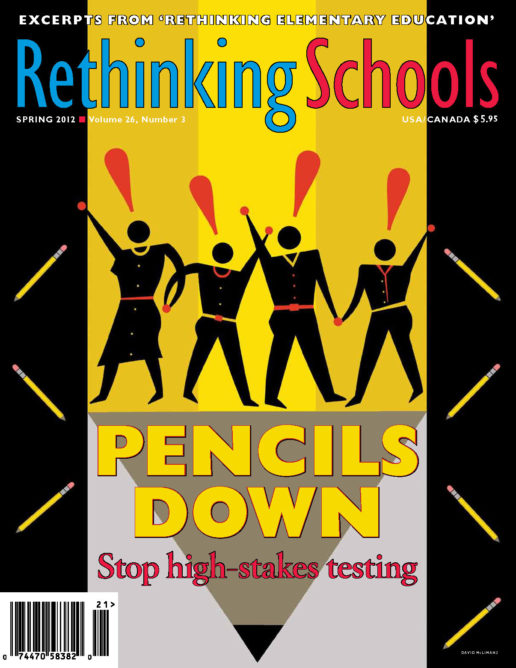Made in Seattle
Spring 2012

The Gates Foundation and the Future of U.S. “Public” Schools
Edited by Philip E. Kovacs
(Routledge, 2011)
The Hustle: One Team and Ten Lives in Black and White
By Doug Merlino
(Bloomsbury, 2011)
Two books with roots in Seattle explore, from different angles, the politics of education.
Whether it is pushing small schools a decade ago or promoting merit pay, value-added measurement, increased charters, and attacks on teachers’ unions today, the Seattle-based Gates Foundation has an agenda that is reshaping public schools in the United States by flexing its funding muscles.
Kovacs’ collection, The Gates Foundation and the Future of U.S. “Public” Schools, takes on the Gates goliath by tracing the history of venture philanthropy, drawing attention to failures past and present of the Gates reform agenda, and pointing out that when billionaire capitalists control education policy in this country, our “public” schools aren’t really so “public” after all.
Highlights include Michael Klonsky’s chapter on the ideology of billionaire philanthropists, Jim Horn’s solo chapter on KIPP schools and one co-authored with Ken Libby on the NewSchools Venture Fund, and Kovacs’ and H.K. Christie’s chapter detailing who Gates is funding and how they are using their money.
Although Kovacs’ book is a bit redundant at times (for instance, I’m not sure how many different histories of billionaire philanthropy and neoliberal education policy we need in one collection) and some of the chapters seem superfluous, The Gates Foundation and the Future of U.S. “Public” Schools is an important collection bent on exposing the agenda that Gates and his ilk have for public education.
Bill Gates is the richest, most famous graduate of Lakeside School, a super-elite private school in North Seattle that mainly caters to the super rich,which makes him, at best, an ironic champion of public school reform. Doug Merlino, author of The Hustle, attended Lakeside for a few years as a middle-class interloper and now works as a journalist living in New York.

In 1986 Merlino played on a boys basketball team (funded by a rich parent) composed of Lakeside students and working-class, African American youth from Seattle’s Central District. More than 20 years later, Merlino followed up with his teammates to tell a compelling story of how race, class, and education intersect to give different people different life opportunities.
Merlino intermixes history, politics, and economics with the real-life stories of his old teammates. Along the way, readers learn about the racial and economic divide that exists in Seattle, the history of the city’s African American and white communities, and the school-to-prison pipeline.
This is what makes The Hustle such an interesting book: Through it we can see how these big, structural forces play out in the individual lives of Merlino and his teammates. And although Merlino does not offer the kind of radical, more structural critique of racism or capitalism I might hope for, he certainly sees the vast disparity of resources in education and society—which means he exposes inequalities and skewers Seattle’s image as a racial utopia. Middle and high school students, as well as teachers, present and future, should find The Hustle a thought-provoking read.

